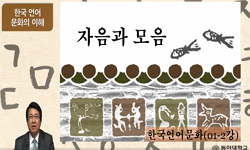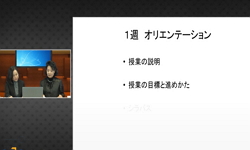This study taking a brief look at ELT in China reflects on thepresentation of culture in the English textbooks adopted in Chinese high school level. The categorization by Ramirez and Hall (1990) shaped the basis of the analysis of the textbooks. The m...
http://chineseinput.net/에서 pinyin(병음)방식으로 중국어를 변환할 수 있습니다.
변환된 중국어를 복사하여 사용하시면 됩니다.
- 中文 을 입력하시려면 zhongwen을 입력하시고 space를누르시면됩니다.
- 北京 을 입력하시려면 beijing을 입력하시고 space를 누르시면 됩니다.

Realization of Culture in English Textbooks in Chinese High School Level = Realization of Culture in English Textbooks in Chinese High School Level
한글로보기https://www.riss.kr/link?id=A100068913
-
저자
( Behrouz Jamalvandi ) (Ilam University)
- 발행기관
- 학술지명
- 권호사항
-
발행연도
2012
-
작성언어
-
- 주제어
-
KDC
700
-
등재정보
KCI등재
-
자료형태
학술저널
-
수록면
89-101(13쪽)
- 제공처
-
0
상세조회 -
0
다운로드
부가정보
다국어 초록 (Multilingual Abstract)
This study taking a brief look at ELT in China reflects on thepresentation of culture in the English textbooks adopted in Chinese high school level. The categorization by Ramirez and Hall (1990) shaped the basis of the analysis of the textbooks. The main objective of the inquiry was to examine the quality of representation of source, target and other cultures in the ELT textbooks and to investigate the way major and subclasses of cultural elements are treated in the textbooks. Following data collection and analysis, the results of the study pointed out that the Chinese ELT textbooks in high school level represented target culture (C2) more than source culture (C1) and other cultures. Further, among five major cultural elements, the most emphasis was given to the category of religion, arts, and humanities under which came subcategories including literature, arts, music, etc. Accordingly, the coverage of culture in Chinese English textbooks in high school level was characterized to be of an imbalanced status. Put it another way, there were some areas of culture, like personal, which were underrepresented throughout the textbooks. Therefore, relying on the findings of this survey, although some culture dimensions emerged adequate, the present status of culture representation in Chinese ELT textbooks in high school level suffers from its unfair behavior with all culture dimensions, overemphasizing some and poorly characterizing some other; consequently, it is unable to cater for students`` deepening and enriching their knowledge of culture in all respects.
동일학술지(권/호) 다른 논문
-
Distance Learning Class Model for Teaching a Foreign Language in University-Level Education Context
- 범태평양 응용언어학회
- ( Sun Min Lee )
- 2012
- KCI등재
-
- 범태평양 응용언어학회
- ( Yoko Asari )
- 2012
- KCI등재
-
A Study of Korean EFL Learners` WTC and Motivation
- 범태평양 응용언어학회
- ( Yac Hao Liu )
- 2012
- KCI등재
-
- 범태평양 응용언어학회
- ( Farhad Golpour )
- 2012
- KCI등재




 KCI
KCI KISS
KISS






